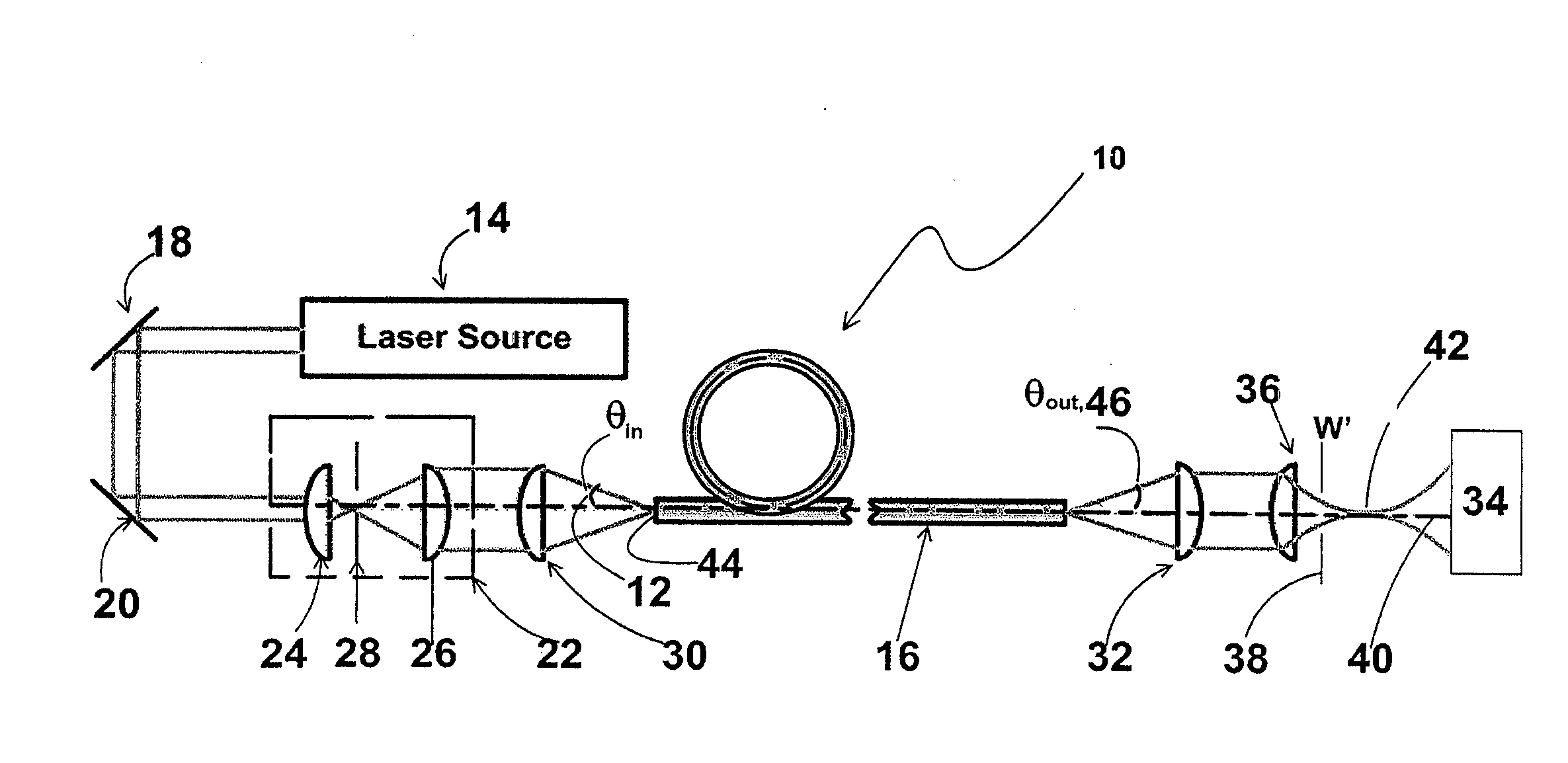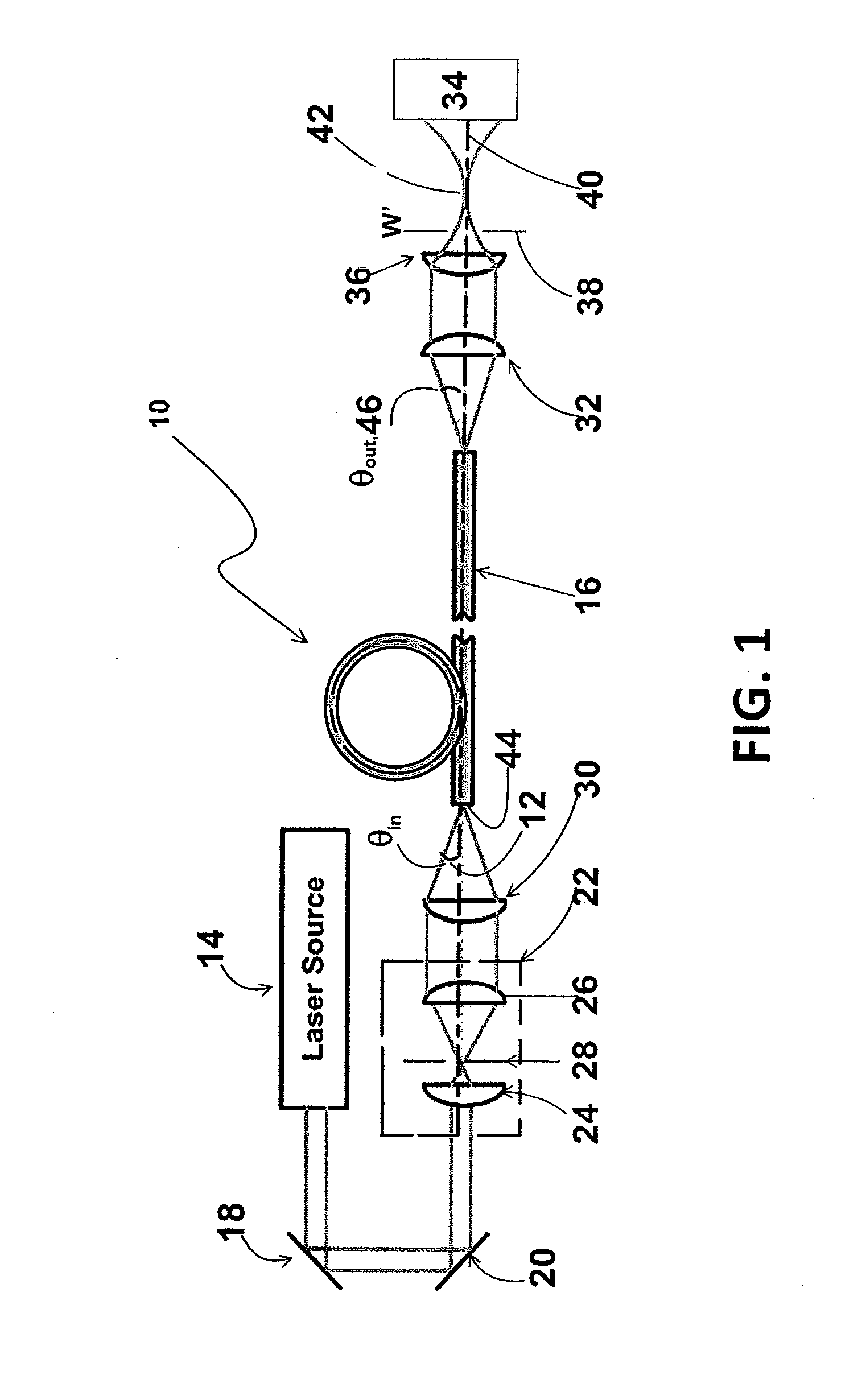Transmission of laser pulses with high output beam quality using step-index fibers having large cladding
a technology of stepindex fiber and laser pulse, which is applied in the direction of cladded optical fiber, lighting and heating apparatus, instruments, etc., can solve the problems of difficult fiber delivery, difficult to sufficiently demagnify the fiber output, and difficult to maintain the tolerance of misalignment at launch, so as to achieve sufficient mode coupling
- Summary
- Abstract
- Description
- Claims
- Application Information
AI Technical Summary
Benefits of technology
Problems solved by technology
Method used
Image
Examples
example
1. Laser Ignition
[0049]Reliable fiber transmission of high peak-power (˜MW) pulses having sufficient beam quality to permit refocusing to an intensity exceeding the breakdown threshold of the gas, that is, IBD,Air≅100-300 GW / cm2 for 10 ns, 1064 nm pulses at atmospheric pressure with pressure scaling of ˜p−0.5 is a requirement for laser ignition. Typical fuel-air mixtures for stationary natural gas engines are lean with air volume fraction >90% so that the breakdown threshold for the mixture is comparable to that of pure air (IBD,Air). Silica-based step-index fibers remain attractive owing to their low-cost and commercial maturity. Although silica (breakdown) damage limits for 1064 nm nanosecond pulses in bulk silica can be as high as 475 GW / cm2, safe operating limits in multimode fibers are generally much lower, for example, IBD,Si≅1 GW / cm2. A practical working relationship is a beam intensity within the fiber core of 0.5 GW / cm2, where T is the duration of the pulse in units of nano...
PUM
 Login to View More
Login to View More Abstract
Description
Claims
Application Information
 Login to View More
Login to View More - R&D
- Intellectual Property
- Life Sciences
- Materials
- Tech Scout
- Unparalleled Data Quality
- Higher Quality Content
- 60% Fewer Hallucinations
Browse by: Latest US Patents, China's latest patents, Technical Efficacy Thesaurus, Application Domain, Technology Topic, Popular Technical Reports.
© 2025 PatSnap. All rights reserved.Legal|Privacy policy|Modern Slavery Act Transparency Statement|Sitemap|About US| Contact US: help@patsnap.com



